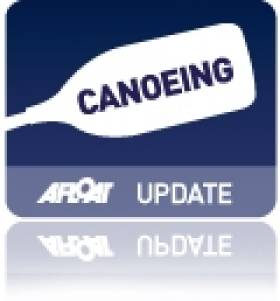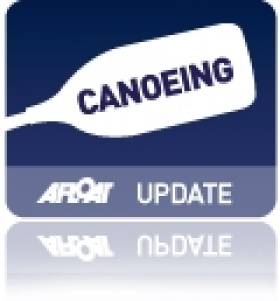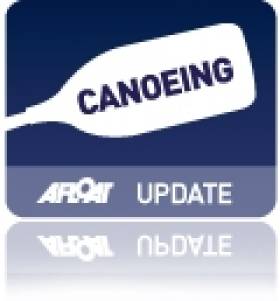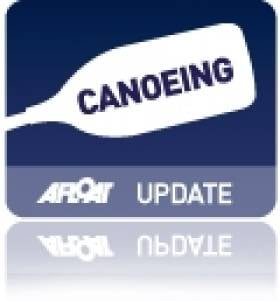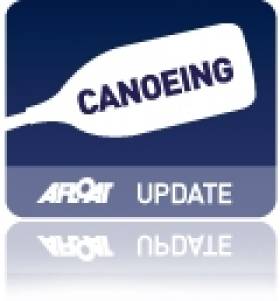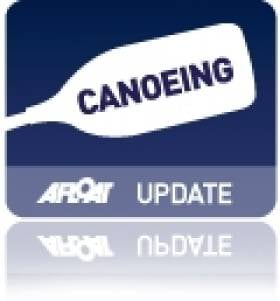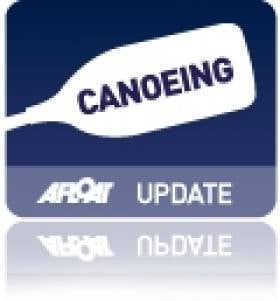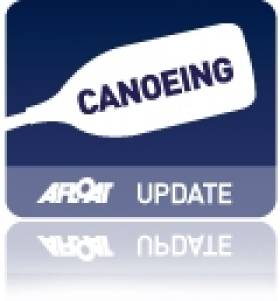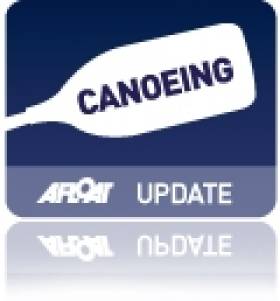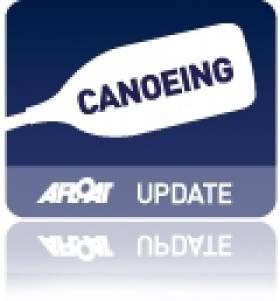Displaying items by tag: canoe slalom
Conlan Competes in Heat of World Canoeing Championships
#CANOEING: Aisling Conlan finished 47th in her heat of the K1 (racing kayak) at the Canoe Slalom World Championships in Deep Creek in Maryland in the United States today. The Ireland competitor needed to finish in the top 30 to qualify for the semi-finals. Maialen Chourraut of Spain was the fastest in the heats with a time of 111.45 seconds.
Canoe Slalom World Championships, Deep Creek, Maryland, United States - Day Two (Selected Results; Irish interest)
Women
K1 – Heats (Top 30 Qualify for Semi-Finals): 1 Spain (M Chourraut) 111.45; 47 Ireland (A Conlan) 136.20.
Jegou Shoots Into European Canoe Slalom Semi-Finals
#CANOEING: Ireland’s C1 canoeist Liam Jegou qualified comfortably for the semi-finals of he Canoe Slalom European Junior Championships at Skopje in Macedonia today. Jegou, whose mother is Irish and who was brought up in Ireland before moving to France, finished fifth of the 20 qualifiers after the first two runs. There were some problems with the timing at the event.
Canoe Slalom European Junior and Under-23 Championships, Skopje, Macedonia (Selected Results; Irish interest, unofficial)
C1 Junior Heats (top 20 qualify): 5 L Jegou 117.94 seconds; 27 R Hendrick 134.98.
K1 Junior Heats (top 30 qualify): 36 C Ryan 120.71; 40 O Farrell 127.58; 53 N Hendrick 190.69.
Craig Comes Close in Canoe Slalom Championships
# EURO CANOE SLALOM: Hannah Craig finished 17th of the 40 competitors in the women’s K1 at the European Canoe Slalom Championships in Krakow in Poland today. The Ireland Olympian clocked 99.82 seconds in the heat, which put her just 1.01 seconds behind the 10th place finisher who secured a slot in the final. Aisling Conlan was given three 50-second penalties and finished 40th.
Canoe Slalom European Championships, Krakow, Poland, Day Two (Irish interest)
Women – K1 Heat (First 10 to Final): 1 Britain (F Pennie) 92.01; 17 H Craig 99.82; 40 A Conlan 274.24 (122.24 plus 152 sec penalties).
Heurteau and Rheinisch Miss Out in One-Shot Heat
# EURO CANOE SLALOM: Ireland’s two competitors in the men’s K1 (racing kayak) at the European Canoe Slalom Championships in Krakow in Poland today came up short of making the final. The programme had to be radically altered because of the recent flooding and only the first 15 of 57 in a single run made it to the final. Ciaran Heurteau was ajudged to have missed the 15th gate and the resulting 50-second penalty ruled him out. However, Eoin Rheinisch was originally in the hunt, initially placing 8th after clocking 91.54 seconds including a two-second penalty for hitting gate 19. But that penalty was upped to 50 seconds and he finished 46th, with Heurteau 47th. Rheinisch’s original run would not have made it in any case as the competitors coming after him pushed him down the field.
Canoe Slalom European Championships, Krakow, Poland, Day One (Irish interest)
Men
K1 Heat One (First 15 to Final): 1 Czech Republic (V Hradilek) 82.96; 46 E Rheinisch 139.54 (89.54 plus 50 sec penalty); 47 C Heurteau 140.20 (86.20 plus 54 sec penalties).
Heurteau Ranked 10th in 2012 Canoe Slalom World Cup Standings
#CANOEING - The Irish Times reports that Ciaran Heurteau is 10th in the World Cup standings for 2012 in the K1 slalom.
The Irish paddler, raised in Paris, has competed in all five Canoe Slalom World Cup events this year, with his best result of 5th place at Pau in France in mid summer, as previously reported on Afloat.ie.
More recently the 25-year-old finished 15th at last weekend's event in Bratislava, Slovakia.
Heurteau, who was beaten to a spot at the London Olympics by Eoin Rheinisch, is at 47th place in the latest International Canoe Federation (ICF) world rankings, which are decided from results over a two-year period.
He stands nine places ahead of Rheinisch, who lost out on a place in K1 final in London after a disastrous 50-second time penalty in his semi-final run.
Olympic Canoe Slalom Qualifying Spots Snapped Up in Lucan
#CANOEING - The Irish Times reports that Eoin Rheinisch and Ciarán Heurteau have secured their canoe slalom qualification spots for London 2012 after last weekend's selection races in Lucan.
Three places were up for grabs in the men's K1, with the third yet to be confirmed after fourth-placed Patrick Hynes contested a touch on a gate by third-place finisher Sam Curtis.
Canoeing Ireland's recently appointed general manager Karl Dunne said the objection is currently being considered.Meanwhile, in the women's K1, the qualifying spots went go Hannah Craig, Helen Barnes and Aisling Conlon.
The qualifiers will be part of the European Championships in Augusburg, Germany from 10-13 May, where Olympic spots are available for boats from two countries not already qualified.
NI Deaf Paddler To Carry Olympic Torch
#CANOEING - Irish canoe slalom paddler Matthew Sykes has secured a place on the Olympic torch relay this summer.
“I am only one of only 8,000 people selected to carry the London 2012 Olympic torch relay," the Northern Irishman told IrishCanoeSlalom.com. "It was a lovely surprise to find out that I was going to carry the Olympic torch.
"To be the first deaf person in Northern Ireland to be chosen is a real privilege and I think it will be a great experience.
"I think it will be a great day when the torch comes to this country and I am sure everyone will be down there to watch so it will be a good experience.”
Sykes will carry torch in Dundonald on 3 June. More details will be available soon on Sykes' website at www.matthewsykes.co.uk/news
As previously reported on Afloat.ie, the Olympic torch relay begins in Plymouth on 19 May and finishes at the Olympic Stadium on 27 July, and includes a visit to Dublin on Wednesday 6 June.
Bratislava Blues for Ireland's Women Paddlers
Neither of Ireland’s women’s K1 paddlers made it through to the semi-final of the Canoe Slalom World Championships in Bratislava today.
Aisling Conlon finished 61st and Hannah Craig – who was given a 50-second penalty for missing gate nine on both of her runs - ended in 66th. Only the top 30 progress. Ireland can not now qualify a boat in women’s events for the Olympics at this championships.
Women
K1 – Heats (top 30 to Semi-Final): 1 Spain (M Chourraut) 96.14 seconds; 61 A Conlon 120.39 (24.25 behind); 66 H Craig 158.15 (62.01 behind)
Entry for Canoe Slalom Team Trials Closes This Weekend
Entry closes this Sunday for the Canoeing Ireland slalom team trials and selection races, scheduled for 16-17 April.
Canoeists hoping for selecton must compete in a total of three events over the weekend. at the Sluice Weir in Lucan, Co Dublin.
Entry forms are available from the Canoeing Ireland website HERE.
Entries must be submitted by e-mail before 5pm on Sunday 10 April, with signed forms payment sent as soon as possible to the Irish Canoe Union.
Skills Tested on New Lagan Canoe Slalom
The BBC News website has video of a new Olympic-style slalom course on the River Lagan for canoeists to test their skills.
The professional facility was constructed at Shaws Bridge by local enthusiasts who have been training on the Lagan for some years, originally using little more than bailing twine and old brush staffs to mark out the course.
"When I look at the course today I think it's a huge achievement," Irish international Hannah Craig told BBC Newsline.
It is hoped that the new canoe slalom course will help broaden the sport's appeal in Northern Ireland.


























